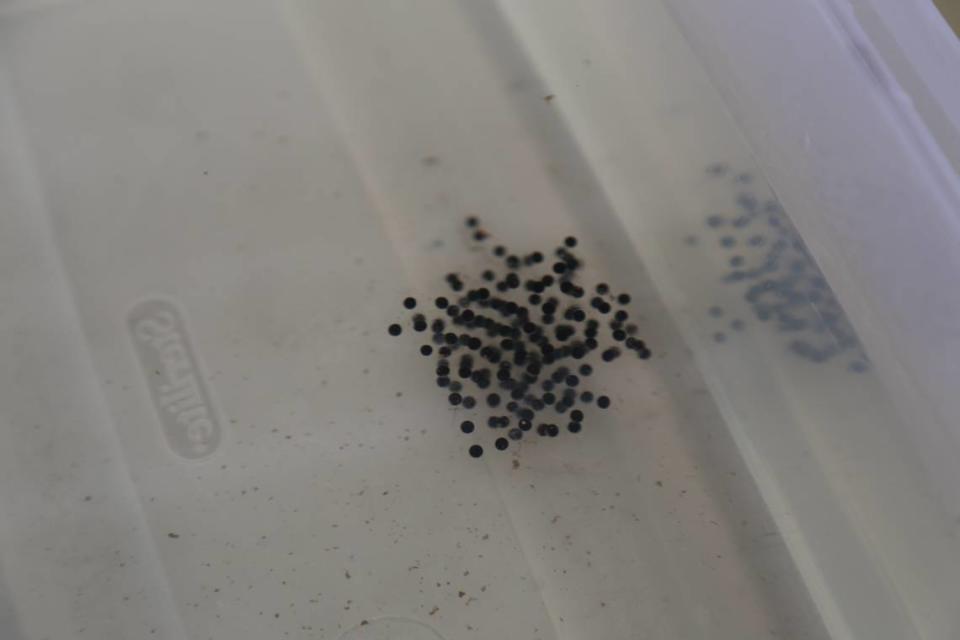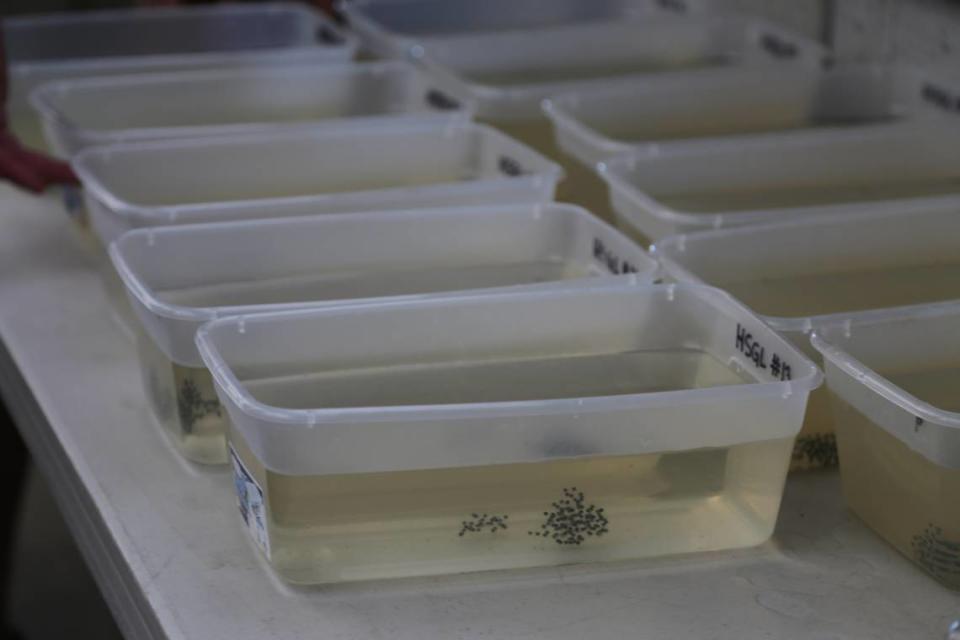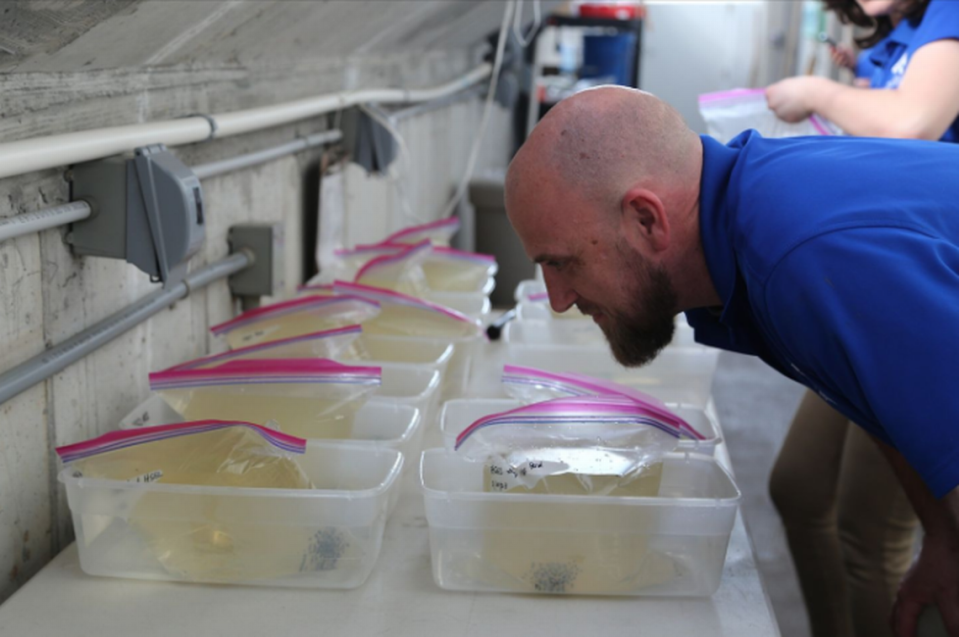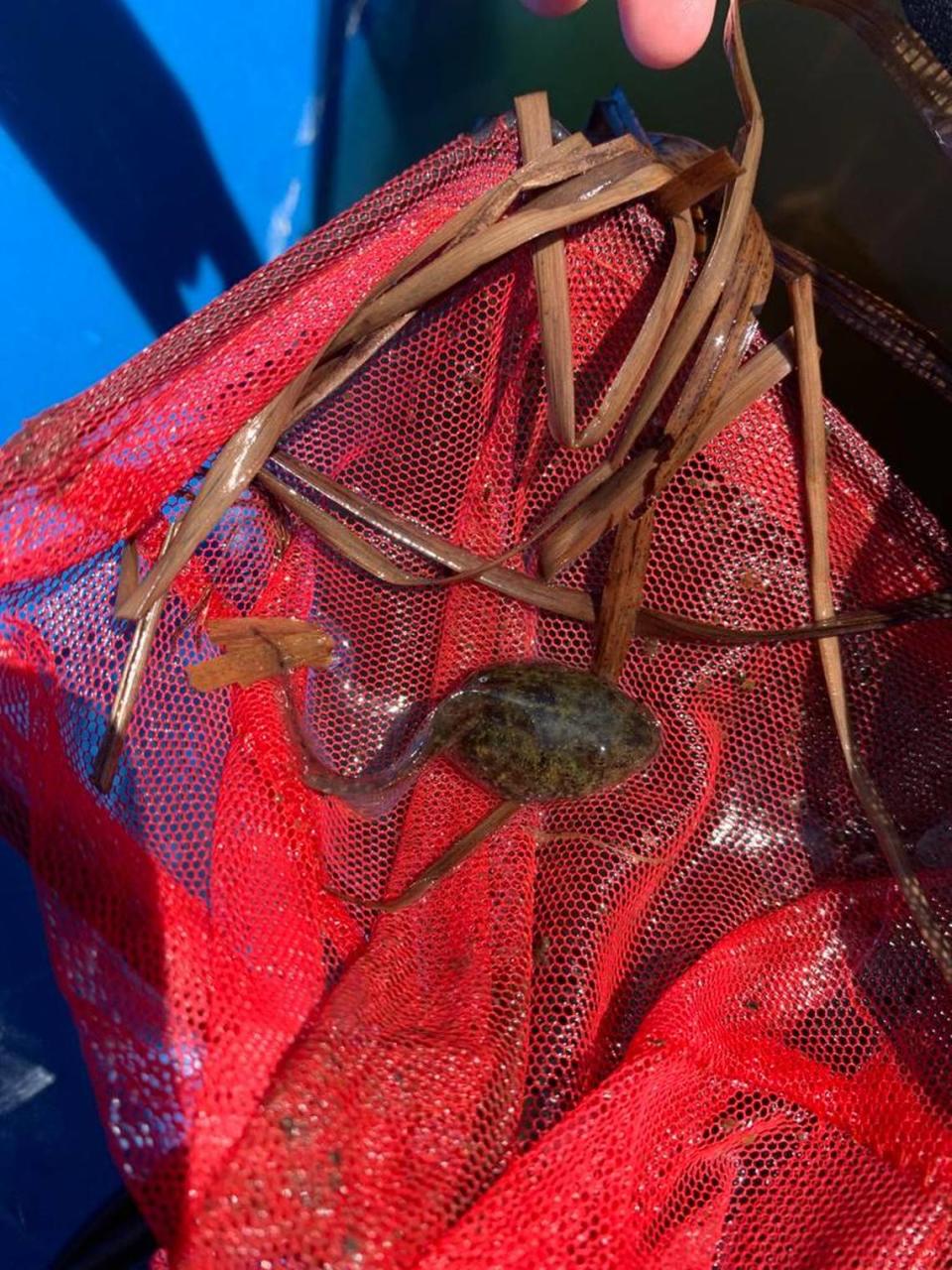Aquarium releases hundreds of spotted frogs into North Carolina wild. Here’s why
A North Carolina aquarium is releasing hundreds of frogs back into the wild after raising them up from tiny eggs.
In a successful animal release, the North Carolina Aquarium at Fort Fisher announced in a Nov. 7 Facebook post that 512 gopher frogs were set loose back into the wild. The frogs originally came from 28 egg masses raised at the aquarium as part of the Gopher Frog Headstarting program, the aquarium said.
Gopher frogs, which grow to around 2 to 3 inches long, are typically more plump with stubbier legs than the average frog, according to the U.S. Fish & Wildlife Service. The spotted frog also can have “numerous warts,” which make it appear more like a toad, the agency said.
The blotchy frogs live mostly in isolated freshwater wetlands across the southeastern coastline, according to the wildlife service. There were historically 23 gopher frog populations in 53 ponds throughout North Carolina, the North Carolina Aquarium said in a Nov. 7 release.
Now, that number has dwindled to seven populations in the state, with only 14 ponds in use by the frogs, the aquarium said. Much of that can be attributed to encroaching development, the aquarium’s director, Hap Fatzinger, told McClatchy News.
Most of the remaining populations are in protected environments, he said.
“It’s a local species, it’s a species in need.” Fatzinger said. “It tells a really important story that connects all of us to coastal North Carolina and other regions in the Southeast.”
A push to restore their population
The aquarium partnered with the North Carolina Wildlife Resources Commission to help restore the gopher frog population by raising some of the eggs laid in the wild, Fatzinger said. The program fully launched in 2015.

The program encountered a scare in 2022 when no egg masses were collected, husbandry curator Ryan McAlarney said in the release. There wasn’t enough rain to fill the ponds, which stifled gopher frog breeding, he said.
So with anxiety high in 2023, wildlife staff entered the ponds to listen for one thing: the low-pitched growling call of a gopher frog.
Luckily for the aquarium, one location in 2023 had egg masses to collect, Fatzinger said. Rainfall was decent during the year, which made conditions better for frogs to lay their eggs.
“We get really worried about it,” Fatzinger said. “When we have a year where we don’t have any water breeding, then you compound multiple years of a population not breeding. You don’t know what the long-term effects are going to be.”

To take in an egg mass, program collectors grab a section of the pile and put it into buckets of water that are sent to the aquarium, he said. Some of the eggs are left in the wild to go through the natural process, whether that be growing up into a frog or serving as a meal for a hungry predator.
‘Something to look forward to’
Deyanira Romo Rossell was there when the eggs were brought to the aquarium, she told McClatchy News. The aquarium’s communication manager said she remembers the “excitement” of the staff to begin raising them.
“Seeing so many egg masses at that point was really meaningful for everyone and something to look forward to,” she said.
The headstarting program also means a lot to Rossell personally, she said.
She’s a Mexican immigrant who enrolled in a program called Head Start when she came to the U.S. to help her learn English and “get a head start on life,” she said.
In a way, Rossell said the aquarium’s program had a similar theme of making sure the frogs would be ready to go back out into the wild.
‘We’re all connected by water’
Caring for the gopher frogs is a very hands-on job, as staff checks them multiple times a day to make sure they get enough food and are growing properly, Fatzinger said. They also provide what he calls “launching pads” to make sure the frogs can climb out of the water without expending too much energy.

When the frogs are set free, program staff inject a small amount of dye under the skin of their hind legs, Fatzinger said. This is done so when the staff returns to an area to inspect it, they can tell if a frog was hatched from the aquarium, he said.
This year, the gopher frogs had a 91% survival rate, which is an accomplishment for the aquarium staff, Fatzinger said.
Releases are typically in the summer, but preparing and caring for the gopher frogs is nearly a year-round affair, Fatzinger said. During the fall, the aquarium harvests maidencane, which is the specific type of vegetation that the tadpoles eat.

Over the years, Fatzinger said people have become so disconnected from nature. But if the aquarium can get people to care about a little frog, then he said the aquarium has done its job right.
“We’re all connected by water, whether you live in Pennsylvania, Ohio, Texas or on the coast of North Carolina, everything’s going to flow down through our watersheds, and at some point, come out to the ocean.” Fatzinger said. “So we all directly impact each other.”
Fort Fisher is about 60 miles northeast of Myrtle Beach.
Boaters get ‘once in a lifetime’ close encounter with ‘curious’ sea creature. See it
Beloved gray wolf matriarch dies, California zoo says. ‘Huge gap in our hearts’
Researcher swims with 30-foot shark as it feeds in Hawaii. See the video

